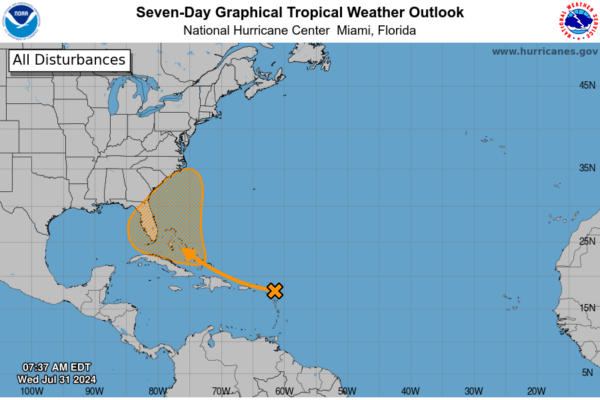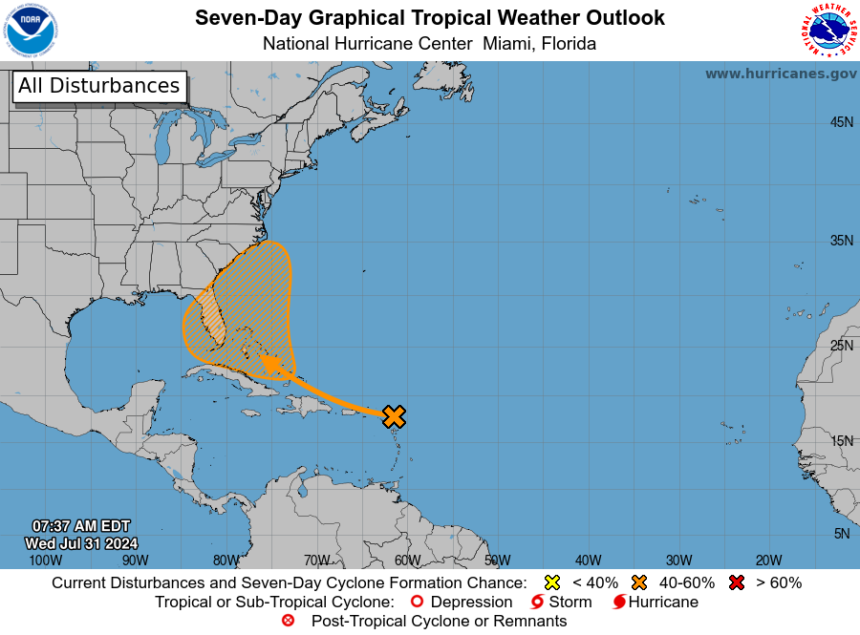
If it intensifies, it will be the second storm to impact the United States this season, following Hurricane Beryl, which hit Texas in early July.
TAMPA, Fla.—Residents of Florida and the Bahamas may be facing the first named storm of the 2024 season next week.
The National Hurricane Center (NHC) is monitoring a large tropical wave expected to enter the Caribbean on July 31, approaching the Lesser Antilles.
This region includes islands such as the Virgin Islands, Trinidad, and Tobago. Satellite images show the developing storm near Puerto Rico on the northern edge of the Lesser Antilles.
As of 8 a.m. EDT on July 31, there is a 60 percent chance of the tropical wave organizing into a storm over the next seven days as it moves west-northwest across the Caribbean.
Currently, there is a “near zero percent” chance of the storm forming within the next 48 hours.
In order to become a tropical depression, this tropical wave must develop into a cyclone with organized deep convection and surface winds circulating counter-clockwise around a well-defined center, producing maximum sustained winds of 38 mph or less, according to the NWS.
If the system develops further, it will be named Tropical Depression Debby.
There is the potential for numerous thunderstorms, excessive rainfall leading to urban flooding, and the risk of isolated flash flooding.
“A strong tropical wave will continue to impact the region on Thursday with lingering moisture through the weekend, maintaining wet and unstable conditions with the potential for flooding,” the NWS stated.
The exact path of the potential storm is uncertain. It is expected to turn north-northeast at some point, but the exact location of this turn near Florida is still unknown. The storm could impact the Atlantic coast of Georgia and the Carolinas.
If the storm strengthens, it will be the second storm to affect the United States this season, following Hurricane Beryl which hit Texas on July 8.
Even though Hurricane Beryl made landfall as a Category 1 storm, it caused significant damage in the Houston/Galveston Bay area and the surrounding Texas Gulf Coast.
Beryl’s effects stretched to Canada, causing record-setting tornadoes and fatal flooding.
The hurricane season began on June 1 and is expected to last until Nov. 30.





